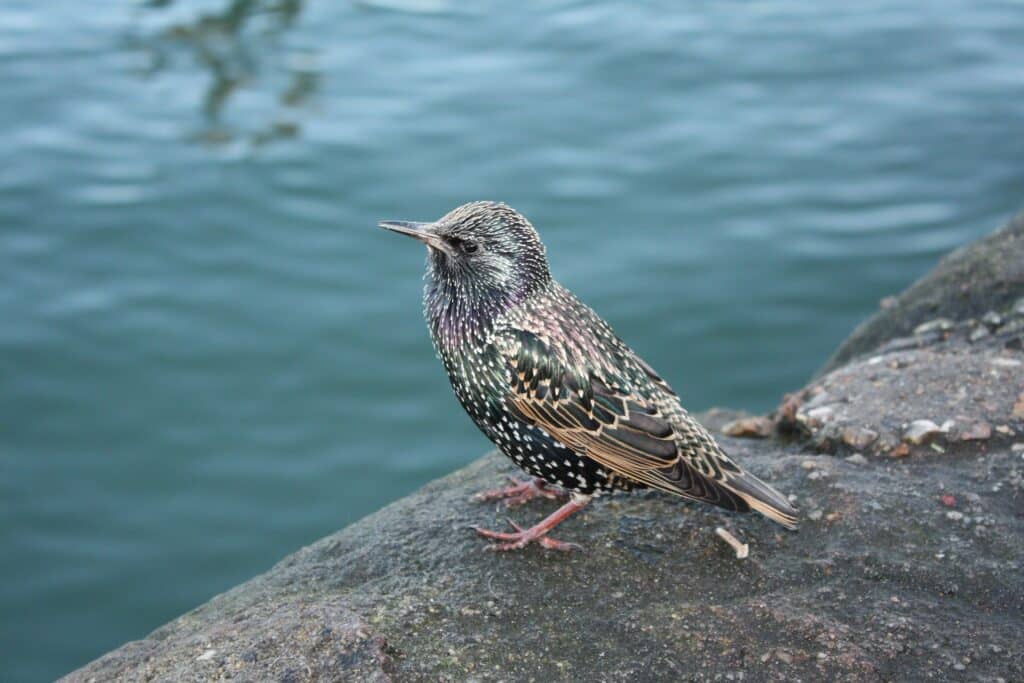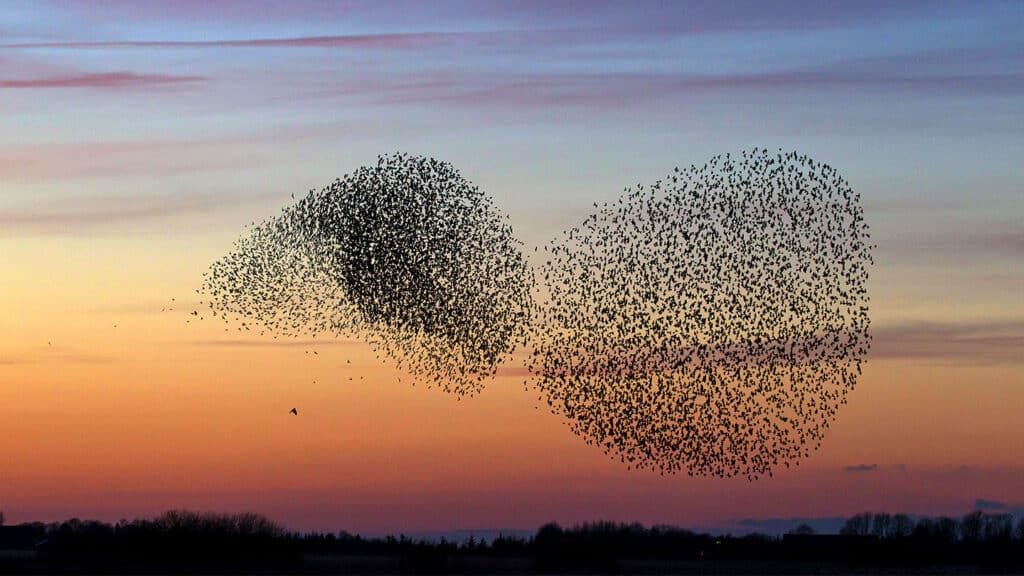The starling is a remarkable bird known for its graceful flight, captivating murmurations, and diverse species. Found in various parts of the world, starlings have captured the attention of bird enthusiasts and casual observers alike. In this article, we will explore the fascinating world of starlings, delving into their characteristics, behaviour, and the wonder of their synchronised flights.
Starlings belong to the family Sturnidae, which includes more than 120 species. These birds exhibit a wide range of sizes, colours, and patterns, making them a captivating subject for birdwatchers and photographers. With their sleek bodies, long tails, and vibrant feathers, starlings possess an undeniable charm. They are known for their acrobatic flight and melodic songs, which contribute to their allure.
The Anatomy of a Starling
Starlings typically measure around 7 to 9 inches in length and have triangular wings, with a wingspan of approximately 12 to 16 inches. Their beaks are sharp and pointed, ideal for foraging and feeding on a variety of food sources. The feathers of starlings vary in colour, ranging from glossy black to iridescent shades of purple and green. These colours often change with the lighting conditions, giving starlings a mesmerising appearance.

Habitat and Distribution
Starlings have a widespread global distribution, inhabiting diverse habitats such as woodlands, grasslands, and urban areas. They are found on every continent except Antarctica, showcasing their adaptability to various environments. While some species are native to specific regions, others have been introduced to new environments with human intervention. European starlings, for instance, were introduced to North America and other parts of the world during the 19th century.
Diet and Feeding Habits
Starlings are omnivorous birds with a diverse diet. They feed on insects, fruits, seeds, and grains, adapting their feeding habits based on the available resources. Their sharp beaks allow them to probe the ground for insects, while their omnivorous nature enables them to scavenge for berries and grains. Starlings are also known to consume nectar from flowers and occasionally indulge in small vertebrates like lizards and frogs.

Breeding and Reproduction
During the breeding season, male starlings engage in elaborate courtship displays to attract mates. They sing complex songs and perform intricate aerial displays to demonstrate their fitness. Once a pair forms a bond, they build nests in tree cavities, cliffs, or man-made structures. Female starlings lay a clutch of eggs, and both parents take turns incubating them. The chicks hatch after a couple of weeks, and the parents tirelessly provide them with food until they fledge.
Starlings’ Social Behavior
Starlings are highly social birds and often form large flocks, especially during non-breeding seasons. These flocks can consist of thousands of individuals and display remarkable coordination in flight. Starlings communicate through a variety of vocalisations and body movements, enabling them to maintain group cohesion and navigate as a collective. Their synchronised movements create breathtaking displays, known as murmurations.
The Enigma of Murmurations
One of the most mesmerising phenomena associated with starlings is murmuration. Murmurations are large-scale aerial displays where thousands of starlings fly together in synchronised patterns. The birds move in perfect harmony, creating mesmerising shapes and patterns in the sky. The exact purpose of murmurations is still a subject of scientific study and speculation. It is believed that murmurations serve multiple functions, including predator avoidance, communication, and mate attraction.

Migration Patterns
Migration is a significant aspect of starlings’ lives. Many species undertake long-distance migrations, flying thousands of miles to reach their breeding or wintering grounds. These migrations often involve large flocks that traverse continents, showcasing the resilience and adaptability of starlings. The timing and routes of migration vary among species, influenced by factors such as food availability and climatic conditions.
Threats and Conservation Efforts
Despite their adaptability, starlings face several threats in the modern world. Loss of natural habitat due to urbanisation, agricultural intensification, and deforestation poses significant challenges to their survival. Additionally, competition with invasive species and exposure to pesticides further impact starling populations in certain regions. However, conservation efforts and awareness campaigns have been instrumental in protecting these birds and their habitats. Preserving natural habitats, creating nest boxes, and implementing sustainable agricultural practices are among the key initiatives to ensure the long-term survival of starlings.
Starlings in Culture and Literature
Starlings have left their mark in various cultures and literary works. From ancient mythology to contemporary poetry, these birds have symbolised different concepts and emotions. Their remarkable flight patterns and melodious songs have inspired artists, writers, and musicians throughout history. Starlings are often associated with resilience, adaptability, and the ability to find beauty in unexpected places.
Conclusion
In conclusion, starlings are captivating birds that grace our skies with their beauty and elegance. From their acrobatic flight and vibrant plumage to their mesmerising murmurations, starlings continue to fascinate and inspire. Understanding their anatomy, behaviour, and conservation needs is essential for ensuring their continued presence in our ecosystems. By appreciating and protecting these remarkable birds, we contribute to the preservation of biodiversity and the intricate web of life that surrounds us.
Sam loves to learn about animals and their habitats. He has been a nature lover from a very young age, and has been writing papers and articles about wildlife for as long as he can remember.
